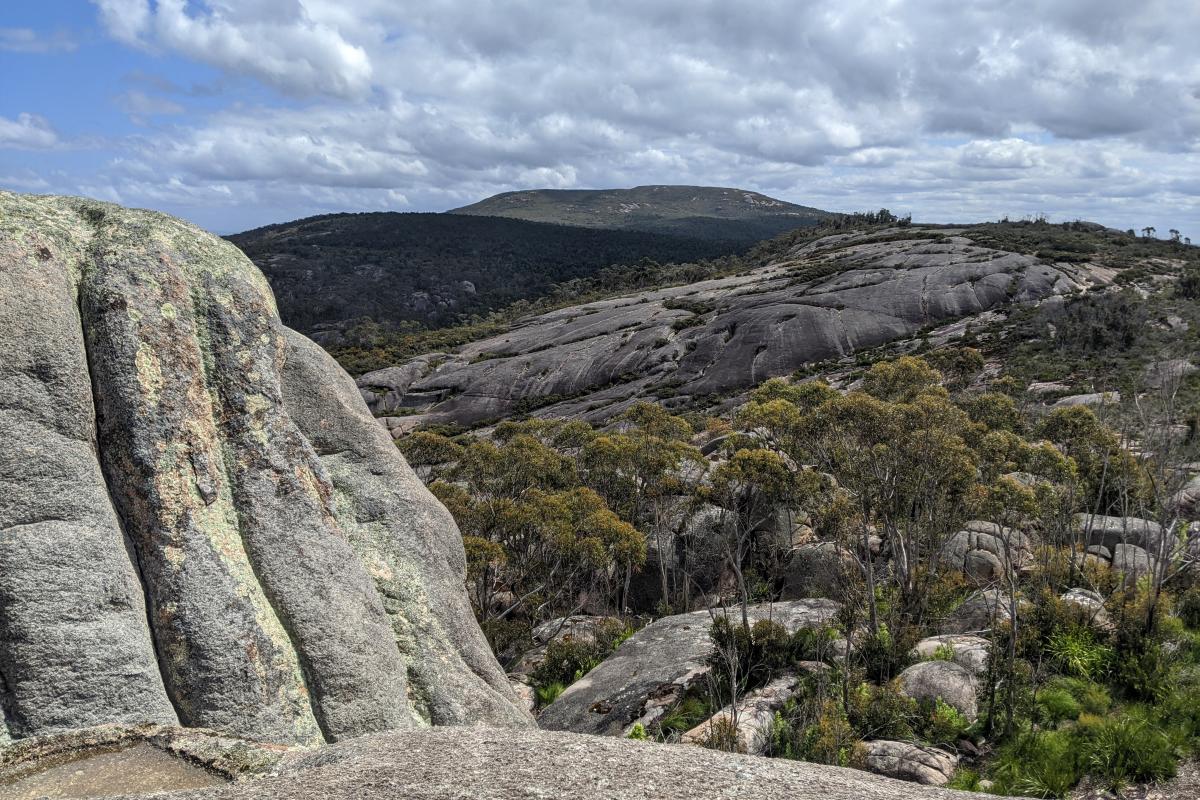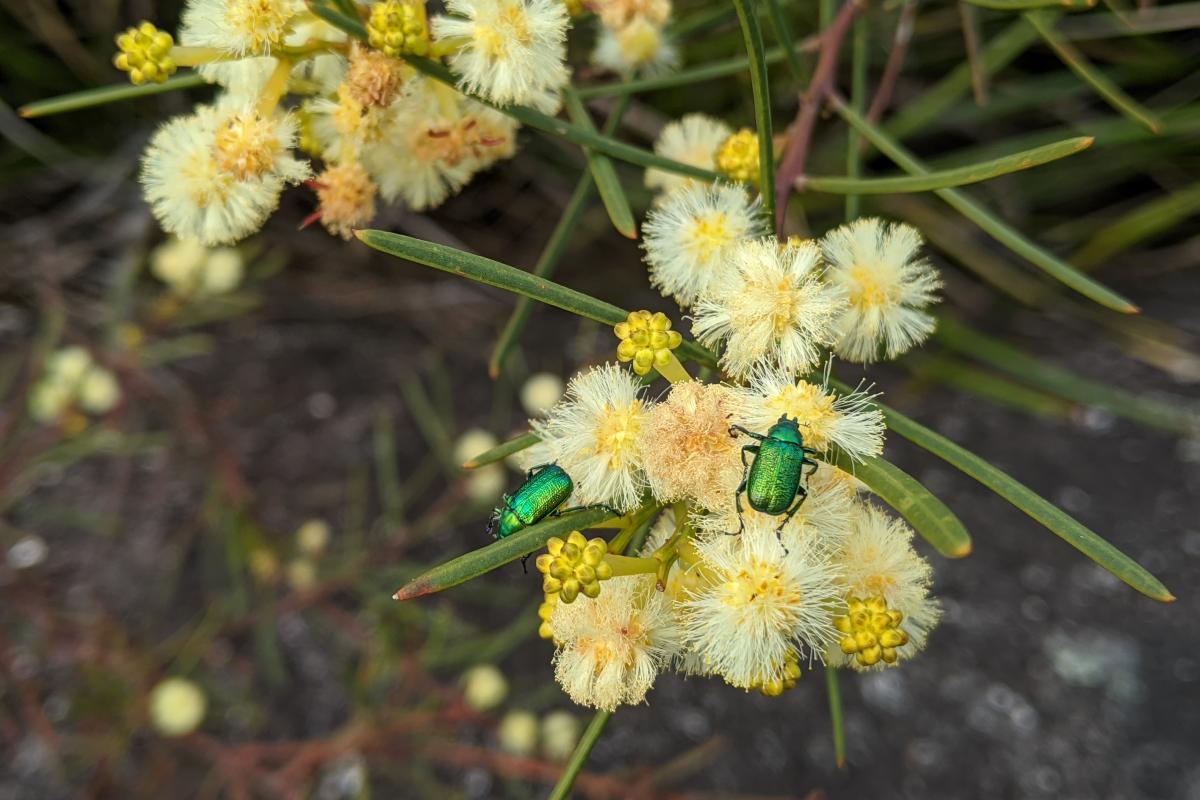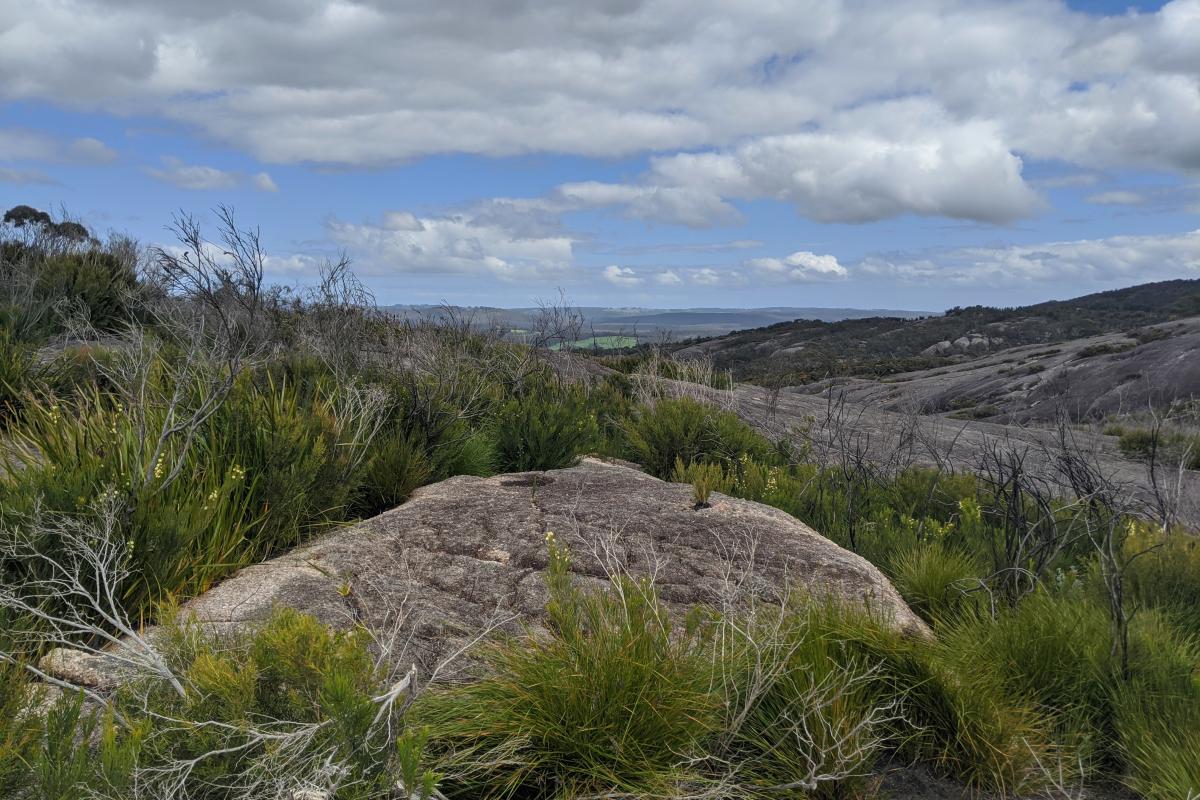About this park
The focal point of the park is the granite outcrop. Take the signposted Summit Walk to the top. Your reward for the climb is expansive views of the lowland scrub. Mount Lindesay has been a dominant landmark for Aboriginal people over thousands of years. Europeans also were guided by it since their first visit in 1829. Bush walking and nature watching are on the menu here and picnicking too! This is a place like no other. Stretch your legs and stay on the trail in a landscape of threatened plant communities. Some of the plants here are found nowhere else in the world!
If you’re into wildflowers, you’re in luck. At Mount Lindesay National Park, you’re sure to find some plants in flower, whatever season you visit.
Review – Views and more!!!
This is one of our favourite walks in this region. A well defined track that passes through different vegetation zones. I wouldn’t recommend walking when wet as there are areas of Granite that can be slippery. The view from the top is stunning and well worth the effort.
Weedsmith – Trip Advisor
Safety information
Plan when to visit. Read this safety information about bushwalking. Consider travelling with a personal location beacon (PLB). In the event you need to be rescued it could save your life!
Gallery



Activities
 Bushwalking
Bushwalking
Plants, wildlife and fungi
Visit the Atlas of Living Australia for a list of species recorded in Mount Lindesay National Park.
Traditional Owners
We recognise and acknowledge Menang people as the traditional owners of Mount Lindesay National Park.